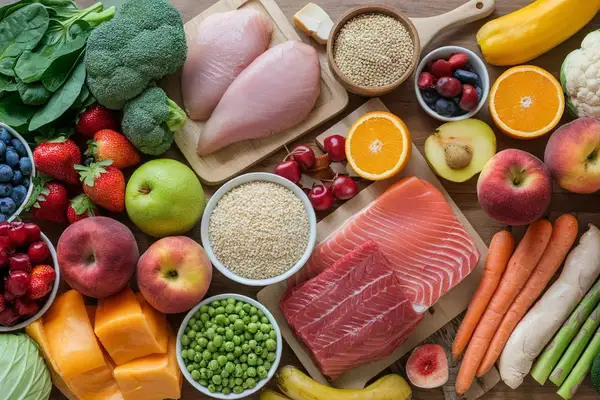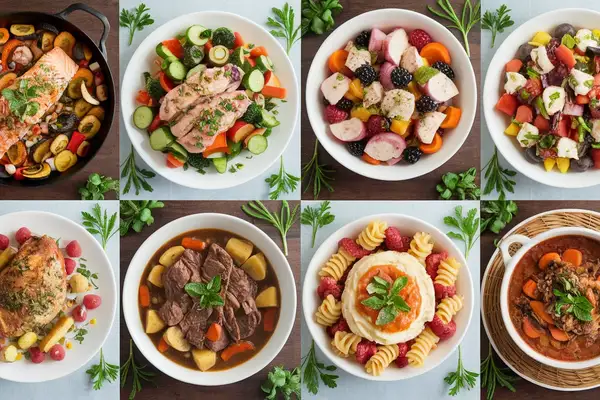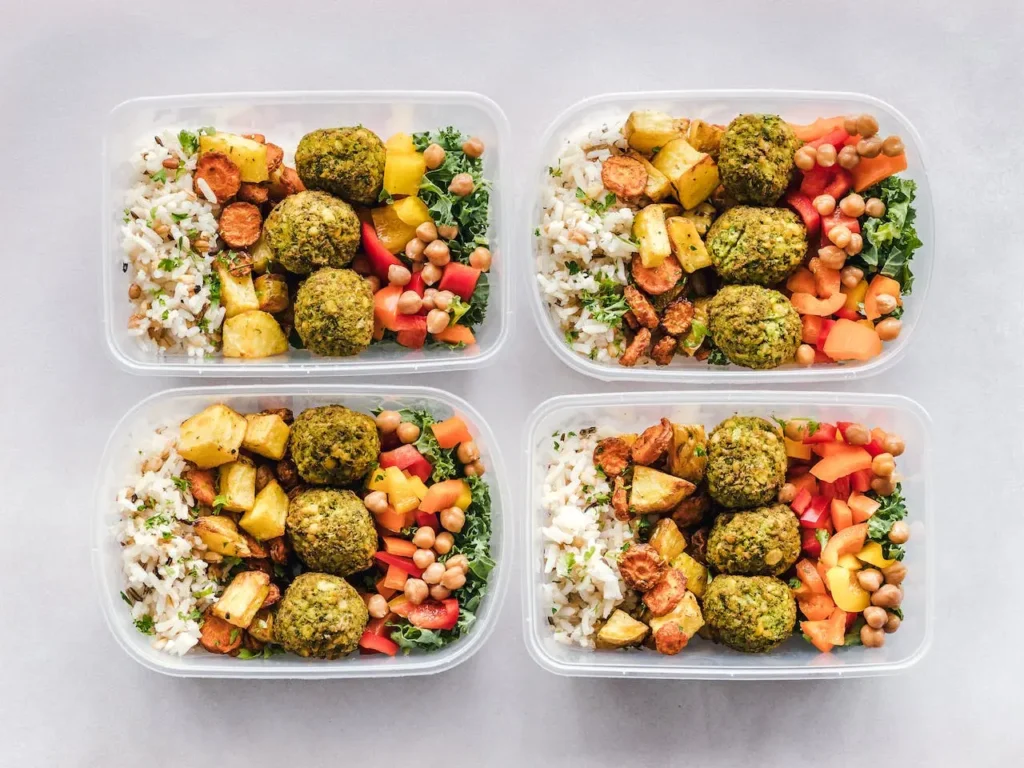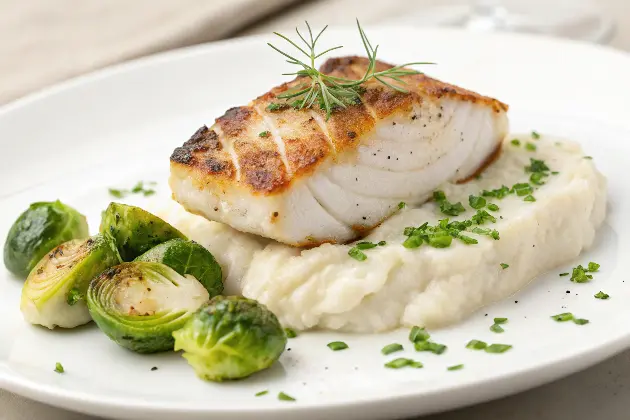The 90 30 50 Diet Plan: Ultimate 7-Day Weight Loss Meal Plan
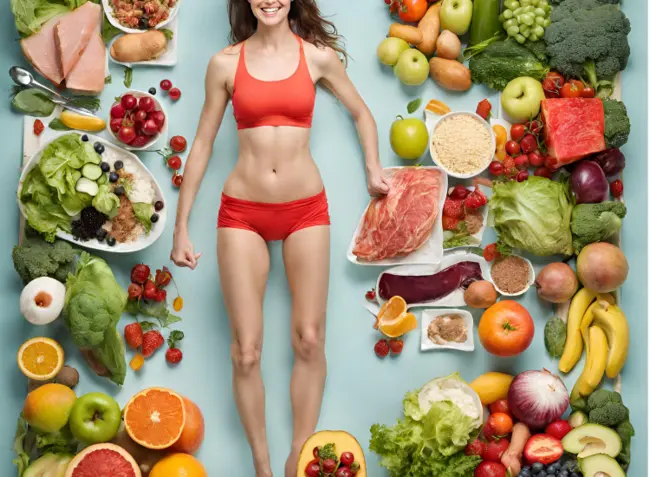
This post may contain affiliate links, meaning I may earn a commission if you make a purchase, at no extra cost to you. I only recommend products I trust. Thank you for your support.
The 90 30 50 diet plan is a popular and effective way to achieve quick weight loss while still enjoying a balanced and nutritious diet.
This comprehensive guide will take you through everything you need to know about the 90 30 50 diet plan, including how it works, its benefits, a 7-day 90-30-50 diet plan for beginners, foods to include and avoid, and common mistakes to avoid.
By the end of this article, you’ll have all the information you need to determine if the 90 30 50 diet plan is right for you.
What is the 90 30 50 Diet Plan?
The 90-30-50 diet plan is a structured eating approach that emphasizes balanced macronutrient intake to support metabolism, fat loss, muscle maintenance, and weight loss goals.
Unlike traditional diets that focus solely on calorie restriction, this 90 30 50 diet plan prioritizes optimal ratios of protein, fiber, and healthy fats to enhance satiety, stabilize blood sugar, and improve body composition.
The numbers 90, 30, and 50 refer to the percentage of each macronutrient that should make up your daily calorie intake.
According to the 90 30 50 diet plan, the recommended macronutrient breakdown is as follows:
- Protein (90 grams): Emphasizes the importance of protein for muscle repair, immune function, and enzyme production. Sources include lean meats, poultry, fish, legumes, and dairy products.
- Fiber (30 grams): Vital for promoting digestive health, aiding in weight management, and controlling blood sugar levels, with sources including vegetables, fruits, whole grains, and legumes.
- Healthy Fats (50 grams): Recognizes the significance of healthy fats for brain function, hormone production, and fat-soluble vitamin absorption. Sources include avocados, nuts, seeds, olive oil, and fatty fish.
With an emphasis on whole foods and nutrient-dense ingredients, the 90-30-50 diet meal plan offers a sustainable and practical way to achieve optimal health and vitality.
Understanding the 90 30 50 Diet Plan Ratios
To fully understand and implement the 90 30 50 diet plan, it’s important to have a clear understanding of the ratios and how they translate into actual meals.
By following these ratios, you can create a meal plan that aligns with the 90-30-50 meal plan free and supports your weight loss goals.
Let’s break down the ratios and how to calculate them:
Protein Ratios:
To calculate the percentage of protein in your meal, divide the total number of protein calories by your total daily calorie intake and multiply by 100.
For example, if you consume 1500 calories per day and 900 of those calories come from protein, the calculation would be (1350/1500) x 100 = 90%. Therefore, 90% of your daily calories should come from protein.
Fiber Ratios:
To calculate the percentage of fiber in your meal, follow the same formula as above but with protein calories instead.
For example, if you consume 1500 calories daily and 450 of those calories come from fiber, the calculation would be (450/1500) x 100 = 30%. Therefore, 30% of your daily calories should come from fiber.
Healthy Fat Ratios:
To calculate the percentage of healthy fats in your meal, repeat the same formula as above with fiber calories.
For example, if you consume 1500 calories daily and 750 calories come from healthy fats, the calculation would be (750/1500) x 100 = 50%. Therefore, 50% of your daily calories should come from healthy fats.
7-day 90 30 50 Diet Plan for Beginners
Now that you have a good understanding of the ratios, let’s move on to the 7-day 90-30-50 diet plan for beginners.
This diet plan is designed to provide a balance of nutrients while focusing on specific macronutrient ratios.
Each day includes meals that contribute to approximately 90g of calories from protein, 30g from fiber, and 50g from healthy fats.
This 90 30 50 diet plan is suitable for beginners looking to start a balanced and nutritious eating pattern that supports their health and weight loss goals.
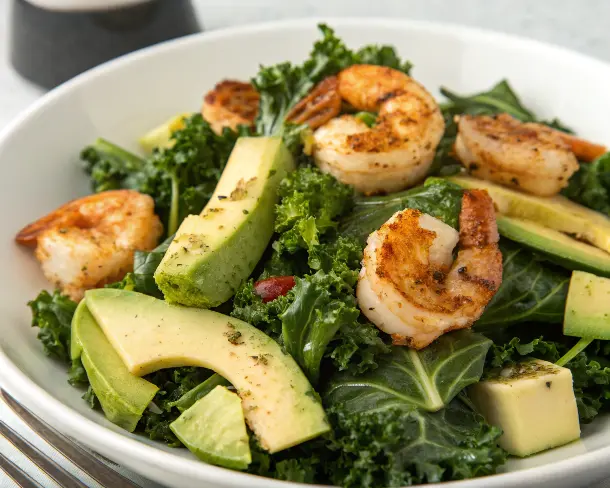
Day 1
Breakfast:
- Scrambled Eggs with Spinach and Tomatoes: Scramble eggs with fresh spinach and halved cherry tomatoes (2 large eggs, 1.5 cups fresh chopped spinach, 1/2 cup cherry tomatoes).
Lunch:
- Kale and Avocado Salad with Grilled Shrimp: Toss chopped kale with a light vinaigrette and top with grilled shrimp, creamy avocado slices (6 oz grilled shrimp, 2 cups chopped kale, 1/4 avocado).
Dinner:
- Turkey Chili with Black Beans and Quinoa: Cook ground turkey with black beans, quinoa, and a mix of onions, bell peppers, and tomato sauce, then top with Greek yogurt and cilantro (2 oz ground turkey, 3/4 cup black beans, 1/2 cup cooked quinoa, 1/4 cup diced onions and bell peppers, 1/2 cup tomato sauce).
Snacks:
- Cottage Cheese with Sliced Cucumber: Enjoy a refreshing snack of cottage cheese with cucumber, flaxseeds, chia seeds, and almonds (1/2 cup cottage cheese, 1/2 cucumber, sliced, 1 tablespoon ground flaxseeds, 1 tablespoon chia seeds, 1/4 cup almonds).
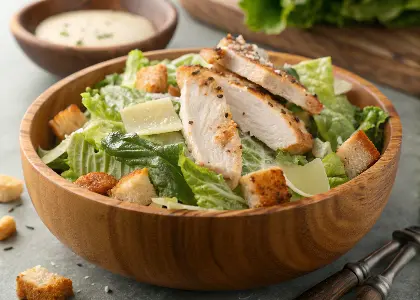
Day 2
Breakfast:
- Greek Yogurt Parfait with Berries, and Chia Seeds: Layer creamy Greek yogurt with mixed berries, crunchy almonds, and chia seeds(1 cup Greek yogurt, 1/2 cup mixed berries, 1 tablespoon almonds, 1 tablespoon chia seeds).
Lunch:
- Grilled Chicken Caesar Salad: Grilled chicken, crisp romaine lettuce, creamy Caesar dressing, and topped with whole grain croutons (6 oz grilled chicken, 2 cups romaine lettuce, 1/4 cup whole grain croutons).
Dinner:
- Baked Salmon Fillet with Quinoa: Serve a tender, baked salmon fillet alongside quinoa, roasted Brussels sprouts, and sautéed spinach (6 oz salmon, 1/2 cup cooked quinoa, 1 cup sautéed spinach).
Snacks:
- Apple Slices with Almond Butter and Walnuts: Slice an apple and pair it with creamy almond butter and a small handful of walnuts (1 apple, 2 tablespoons almond butter, small handful of walnuts).
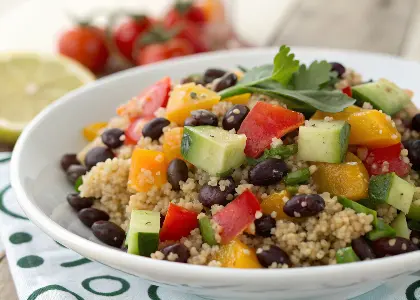
Day 3
Breakfast:
- Overnight Oats with Greek Yogurt with Mixed Berries: Combine rolled oats with Greek yogurt, chia seeds, and protein powder, then top with mixed berries and sliced almonds (1/2 cup rolled oats, 1 cup Greek yogurt, 1/2 cup mixed berries, 1 tablespoon almonds, 1 tablespoon chia seeds, 1 scoop protein powder).
Lunch:
- Quinoa and Black Bean Salad: Toss cooked quinoa and black beans with creamy avocado, fresh cherry tomatoes, and cucumber, then drizzle with a zesty lemon vinaigrette (1/2 cup cooked quinoa, 1/2 cup black beans, 1/4 avocado)
Dinner:
- Grilled Tofu with Stir-Fried Vegetables and Quinoa: Grill slices of tofu until golden, then serve with colorful stir-fried vegetables sautéed in olive oil (8 oz tofu, stir-fried vegetables in olive oil, 1/2 cup cooked quinoa).
Snacks:
- Greek Yogurt with Honey and Almonds: Spoon creamy Greek yogurt into a bowl and top with a drizzle of honey and a small handful of crunchy almonds (1 cup Greek yogurt, honey, small handful of almonds).
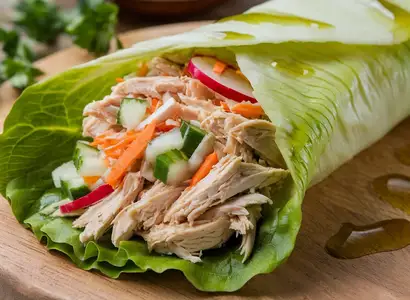
Day 4
Breakfast:
- Smoothie Bowl with Greek Yogurt and Mixed Berries: Blend Greek yogurt with spinach and mixed berries, then top with sliced almonds and chia seeds (1 cup Greek yogurt, 1/2 cup mixed berries, 1 cup spinach, 1 tablespoon almonds, 1 tablespoon chia seeds).
Lunch:
- Chicken Salad Wrap with Cucumber and Lettuce: Fill a whole grain or low-carb wrap with a creamy chicken salad, crisp cucumber slices, and fresh lettuce for a light and satisfying meal (1 whole grain wrap, 1/2 cup chicken salad, 1/4 cup sliced cucumber, 1/2 cup lettuce).
Dinner:
- Baked Cod with Quinoa Pilaf and Roasted Asparagus: Serve flaky baked cod alongside a fluffy quinoa pilaf and a side of roasted asparagus for a light, flavorful dinner (6 oz cod, 1/2 cup cooked quinoa).
Snacks:
- Cottage Cheese with Cucumber, Flaxseeds, and Walnuts: Enjoy creamy cottage cheese paired with crisp cucumber slices, a sprinkle of flaxseeds, and a handful of walnuts (1/2 cup cottage cheese, 1 tablespoon flaxseeds).
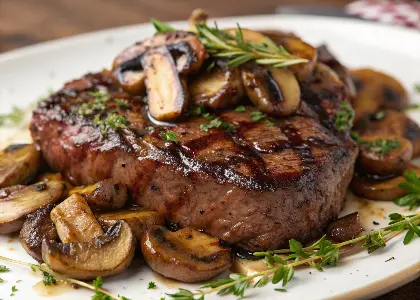
Day 5
Breakfast:
- Protein-Packed Pancakes with Greek Yogurt and Mixed Berries: Serve fluffy protein pancakes topped with a dollop of Greek yogurt, fresh mixed berries, a sprinkle of almonds, and a drizzle of creamy almond butter (2 protein pancakes, 1/2 cup mixed berries, 1 tablespoon almond butter).
Lunch:
- Lentil and Quinoa Salad: Toss cooked lentils and quinoa with crumbled feta cheese, cherry tomatoes, cucumber, olives, and a zesty lemon-tahini dressing (1/2 cup cooked lentils, 1/2 cup cooked quinoa).
Dinner:
- Grilled Ribeye Steak with Sautéed Mushrooms: Grill a juicy ribeye steak to your preferred doneness and serve with a side of sautéed mushrooms cooked in olive oil and garlic for a rich, savory pairing (6 oz ribeye steak, 1/2 cup sautéed mushrooms).
Snacks:
- Hummus with Whole Grain Pita, Carrot Sticks, and Walnuts: Enjoy creamy hummus with warm whole grain pita bread, crunchy carrot sticks, and a small handful of walnuts (1/4 cup hummus, 1 whole grain pita bread).
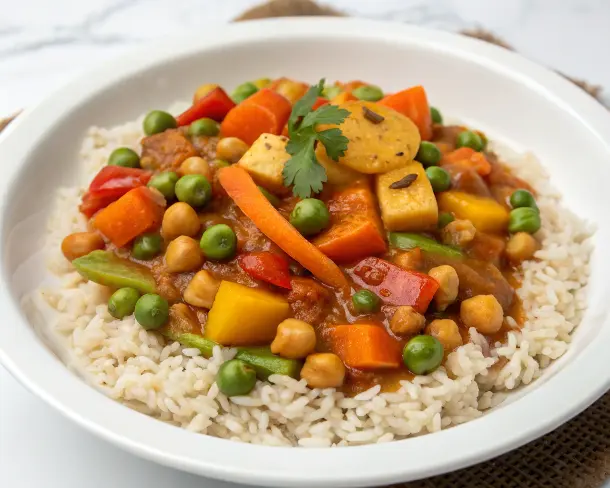
Day 6
Breakfast:
- Scrambled Tofu with Spinach, Tomatoes, and Avocado on Whole Grain Toast: Sauté crumbled tofu with fresh spinach and cherry tomatoes, then serve on whole grain toast and top with creamy avocado slices (1 cup scrambled tofu, 1 cup spinach, 1/2 cup cherry tomatoes, 1/4 avocado, 2 slices whole grain toast).
Lunch:
- Vegetable Curry with Chickpeas over Brown Rice: Simmer mixed vegetables and chickpeas in a fragrant coconut milk-based curry sauce seasoned with turmeric, cumin, and coriander. Serve over a bed of fluffy brown rice (1 cup vegetable curry, 1/2 cup brown rice).
Dinner:
- Grilled Salmon with Brown Rice and Steamed Broccoli: Serve tender grilled salmon alongside fluffy brown rice and steamed broccoli, with a handful of almonds on the side (6 oz grilled salmon, 1/2 cup cooked brown rice, 1 cup steamed broccoli, 1 tbsp almonds).
Snacks:
- Greek Yogurt with Honey, Berries, and Chia Seeds: Spoon creamy Greek yogurt into a bowl and top with a drizzle of honey, sweet mixed berries, and a sprinkle of chia seeds (1 cup Greek yogurt, honey, 1/2 cup mixed berries, 1 tablespoon chia seeds).
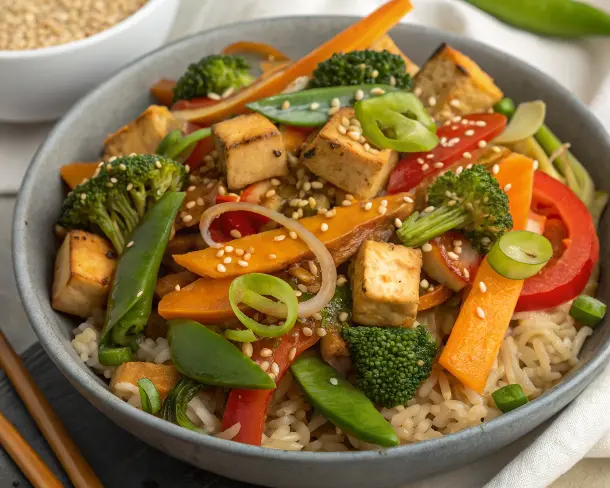
Day 7
Breakfast:
- Protein Smoothie with Greek Yogurt, Banana, Spinach, and Chia Seeds: Blend Greek yogurt with banana, fresh spinach, almonds, and chia seeds for a creamy, protein-packed breakfast (1 cup Greek yogurt, 1 banana, 1 cup spinach, 1 tablespoon chia seeds).
Lunch:
- Quinoa Salad with Grilled Chicken and Avocado: Toss cooked quinoa with grilled chicken, cherry tomatoes, cucumber, and avocado, then drizzle with a zesty lemon-tahini dressing (1/2 cup cooked quinoa, 4 oz grilled chicken, 1/4 avocado).
Dinner:
- Baked Tofu with Stir-Fried Vegetables and Brown Rice: Serve crispy baked tofu with a colorful medley of stir-fried vegetables cooked in olive oil, paired with a side of brown rice (8 oz baked tofu, 1/2 cup cooked brown rice).
Snacks:
- Cottage Cheese with Pear, Flaxseeds, and Walnuts: Enjoy creamy cottage cheese topped with sweet sliced pear, a sprinkle of flaxseeds, and crunchy walnuts for a satisfying and protein-rich snack (1/2 cup cottage cheese, 1 pear, 1 tablespoon flaxseeds).
90-30-50 Diet Food List
Including a variety of these foods in your 90 30 50 diet plan will ensure that you’re getting a wide range of nutrients while maintaining the specified macronutrient ratios.
Protein
- Lean meats: Chicken breast, turkey, lean cuts of beef, pork loin.
- Fish and seafood: Salmon, tuna, shrimp, cod, tilapia.
- Plant-based proteins: Tofu, tempeh, edamame, lentils, chickpeas, black beans.
- Eggs: Whole eggs or egg whites.
- Dairy: Greek yogurt, cottage cheese, low-fat cheese.
Whole grains
- Brown rice
- Quinoa
- Oats
- Barley
- Whole wheat pasta/bread
Legumes
- Lentils
- Chickpeas
- Black beans
- Kidney beans
- Split peas
Vegetables
- Broccoli
- Brussels sprouts
- Spinach
- Kale
- Carrots
- Cauliflower
Fruits
- Berries (raspberries, blueberries, strawberries)
- Apples (with skin)
- Pears
- Oranges
- Bananas
- Avocado (also a source of healthy fats)
Nuts and seeds
- Almonds
- Walnuts
- Chia seeds
- Flaxseeds
- Pumpkin seeds
Other fiber-rich foods
- Whole grain cereals (with at least 5 grams of fiber per serving)
- Popcorn (air-popped, without added butter or salt)
- Psyllium husk (can be added to smoothies or yogurt)
Healthy fats
- Olive oil: Extra virgin olive oil for cooking or dressing.
- Nut butters: Peanut butter, almond butter (watch portion sizes for calorie control).
Foods to Avoid in a 90-30-50 Meal Plan
By minimizing or avoiding these foods, you can maximize the effectiveness of the 90 30 50 diet plan.
Highly processed foods
- Sugary snacks and desserts: Candies, cookies, pastries, cakes, sugary cereals.
- Sugary beverages: Soda, sweetened fruit juices, energy drinks, flavored coffee drinks.
- Processed meats: Bacon, sausages, hot dogs, deli meats high in sodium and additives.
- Fast food: Burgers, fries, fried chicken, pizzas with high-fat toppings.
Refined Carbohydrates
- White bread
- White rice
- White pasta
- Sugary breakfast cereals
- Baked goods made with refined flour
Unhealthy fats
- Trans fats: Found in partially hydrogenated oils, often in processed and fried foods.
- Saturated fats: Limit intake from sources like fatty meats, full-fat dairy, and palm oil.
- Excessive use of cooking oils high in saturated fats: Such as coconut oil or palm oil.
High sugar foods
- Sugary drinks: Soda, fruit drinks, sweetened teas, energy drinks.
- Candy and sweets: Hard candies, gummies, sugary snacks.
- Processed foods with added sugars: Sweetened yogurts, sauces, dressings.
Excessive alcohol
- Alcoholic beverages can be high in calories and may contribute to weight gain if consumed in excess.
Highly processed snacks
- Chips
- Crackers with added sugars or hydrogenated oils
- Packaged snack cakes and cookies
- Microwave popcorn with added butter or flavorings
Artificial sweeteners and additives
- Artificial sweeteners: Some people prefer to limit these due to potential health concerns.
- Artificial additives: Artificial colors, flavors, and preservatives commonly found in processed foods.
Fried foods
- Deep-fried foods: French fries, fried chicken, fried snacks.
- Foods cooked in unhealthy oils or with excessive batter.
Benefits of the 90 30 50 Diet Plan
Here are the benefits of the 90 30 50 diet plan:
1. Metabolism and fat-burning support
- The nutrients in the 90 30 50 diet plan work to increase metabolism and support fat-burning processes, creating a calorie deficit, which can lead to quick weight loss.
2. Improved satiety
- Including protein and healthy fats in the 90 30 50 diet plan helps keep you full and satisfied, reducing the likelihood of overeating or snacking on unhealthy foods.
3. Lean muscle support
- The macronutrient ratios in the diet plan aim to support lean muscle mass, contributing to optimal health and weight management goals.
4. High-protein and fiber content
- The 90-30-50 meal plan focuses on high-protein and fiber-rich foods to promote feelings of fullness and satisfaction and sustained energy levels throughout the day.
5. Customizable caloric intake
- The 90 30 50 diet plan allows for modifications to accommodate different calorie needs, offering flexibility for individuals with varying energy requirements.
6. Sustainable approach
- Unlike restrictive diets that eliminate entire food groups, the 90 30 50 diet plan allows for flexibility and variety, making it easier to stick to in the long run.
7. Reduced inflammation
- The 90 30 50 diet plan encourages the consumption of whole, unprocessed foods, which can help reduce inflammation in the body.
8. Blood sugar control
- By limiting carbohydrates, the 90 30 50 diet plan can benefit individuals with diabetes or insulin resistance.
Conclusion
The 90 30 50 diet plan is a flexible and balanced approach to weight loss that focuses on specific macronutrient ratios.
By following this plan, you can achieve quick weight loss while still enjoying a variety of nutrient-dense foods.
However, it’s important to remember that everyone is different, and what works for one person may not work for another.
It’s always a good idea to consult with a healthcare professional or registered dietitian before starting any diet to determine if it’s the right fit for your individual needs and goals.
Also check out these trending articles for weight loss:
- 7-day 1600 calorie meal plan
- The menopause diet
- 9 proven strategies to get rid of belly fat
- 7-day PCOS diet plan for weight loss
- 7-day 1400 calorie meal plan
- 7-day bone broth diet plan
- 7-day diet plan for high blood pressure
- Intermittent fasting meal plan
- Carb cycling meal plan
- 7 day Daniel fast meal plan
- 30-day low fodmap meal plan
- 30-day carnivore diet meal plan
- 7-day meal plan for ulcerative colitis
- South beach diet for weight loss
- 10 vegetarian breakfast ideas
FAQs about the 90 30 50 diet plan
Is the 90 30 50 diet plan suitable for vegetarians or vegans?
Yes, the 90 30 50 diet plan can be modified to accommodate vegetarian or vegan diets. Plant-based protein sources such as tofu, tempeh, legumes, and quinoa can be used to meet the protein requirements.
Can I drink alcohol while following the 90 30 50 diet plan?
It is best to limit or avoid alcohol consumption as it provides empty calories and can hinder weight loss progress. If you choose to drink, opt for lower-calorie options like light beer or dry wine in moderation.
Can I continue the 90 30 50 diet plan beyond 7 days?
The 90 30 50 diet plan can be followed long-term if desired. However, it’s important to ensure that you’re meeting all your nutrient needs and adjusting the ratios as necessary.
Can I still enjoy treats and desserts on the 90 30 50 diet plan?
While the 90 30 50 diet plan encourages a balanced approach to eating, it’s important to prioritize nutrient-dense foods. Treats and desserts should be enjoyed in moderation to maintain the overall balance of the diet.
